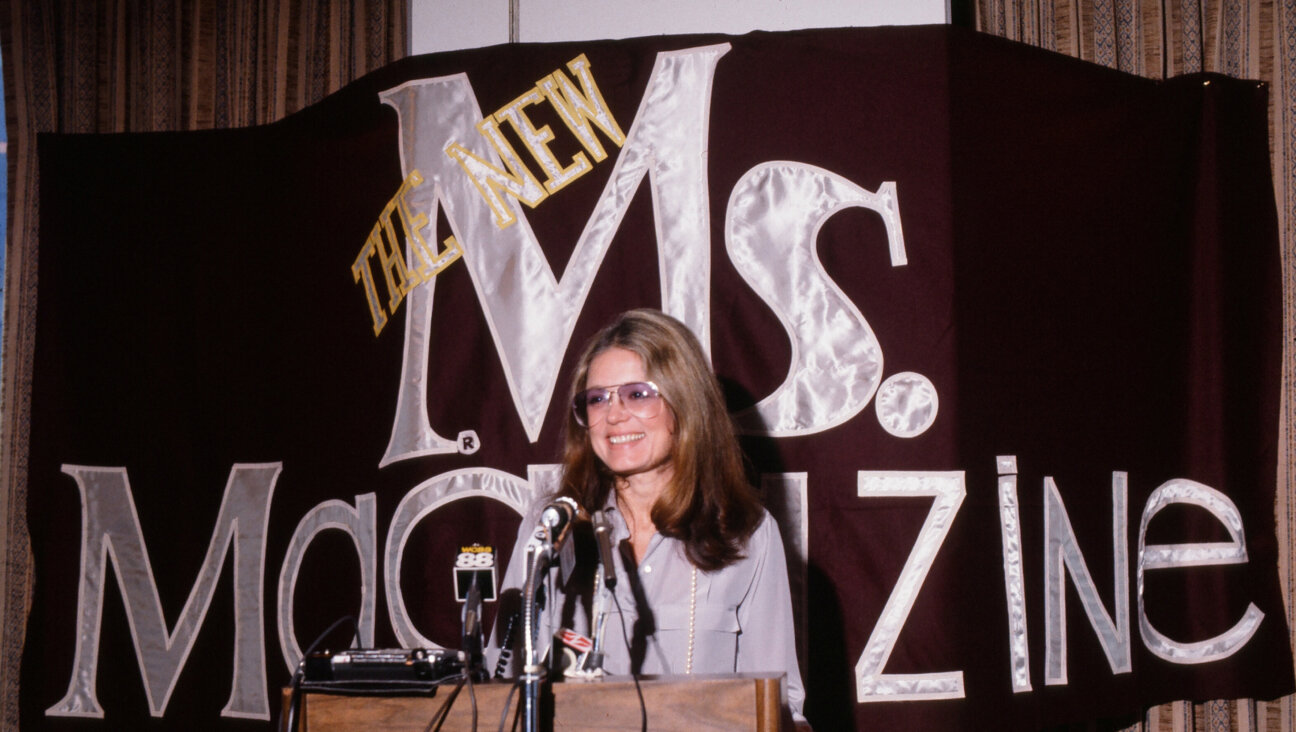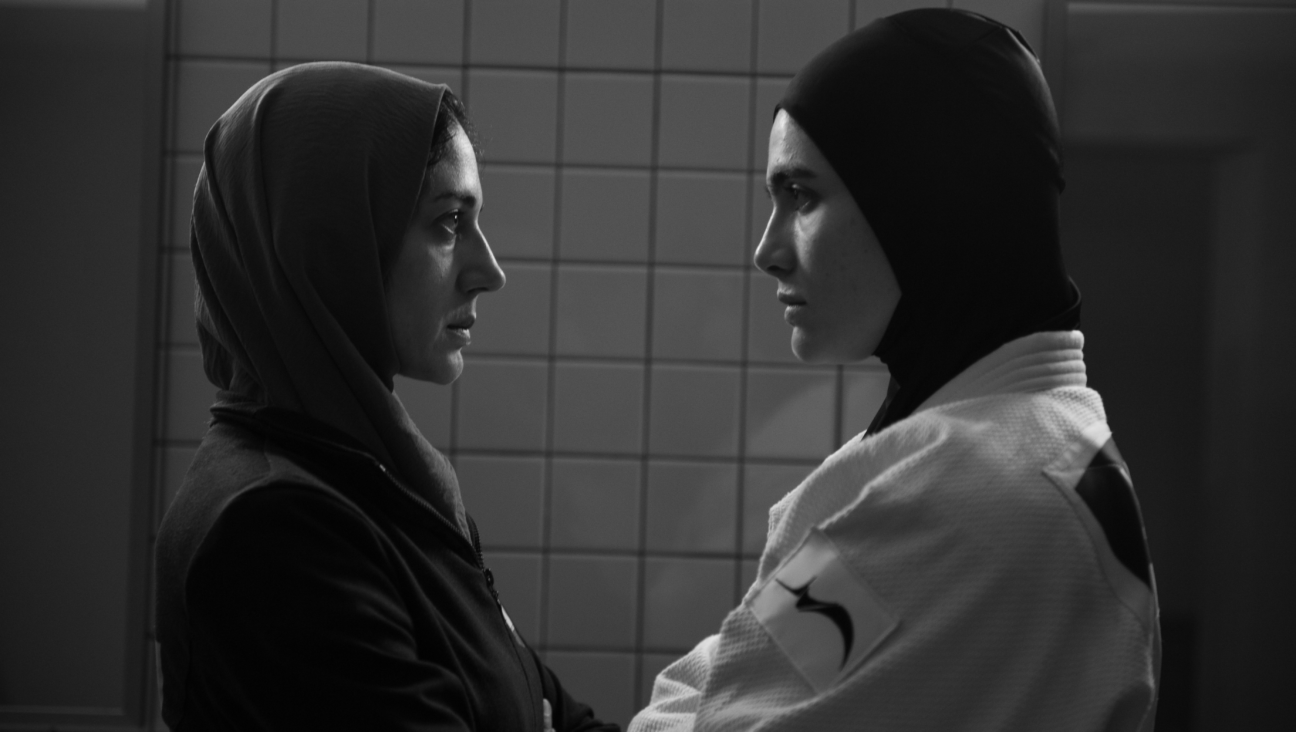The Jewish Identity of Madeline Kahn

Image by Getty Images
For a long time, starting just after her fiftieth birthday, Madeline Kahn did something eight times a week that she’d never done even once before: she lit Sabbath candles. As Gorgeous Teitelbaum in Wendy Wasserstein’s “The Sisters Rosensweig” (1992–93), Madeline had to connect with a Jewish heritage about which she knew little. She’d grown up in a non-observant family, but now she was playing the lone observant Rosensweig, the only self-aware sister, the one who makes the others admit who they really are.
Madeline was determined to get it right, and she had plenty of motivation: already she worried that Gorgeous, as written, was a suburban yenta, “and I’m very sensitive to doing stereotype sketches of Jewish women,” she told an interviewer. “[R]ight off the page, I thought that the role of Gorgeous had the danger of being that. When I first read [the play], I couldn’t imagine an individual saying those words unless she was campy. And I didn’t want to come to Lincoln Center, to be in a new play with all these talented people, and be the campy one.”
In life, Madeline hewed closer to the character of Gorgeous’ sister Sara, thoroughly detached from her roots. You’d never have known Sara was Jewish — and Jane Alexander, the actress who played her, wasn’t. Madeline wanted to render an honest portrayal of Gorgeous, and her combination of care and respect for the character would help her take the Tony for best actress in 1993. To find the material she needed, though, she had to look beyond herself.
Of Ashkenazi descent on both sides of her family, Madeline had little contact with most of her relatives, and little knowledge of their history — which was just as her mother intended. Extravagant, mentally unstable, and highly manipulative, Paula Kahn kept people apart, and she tended to religions in which she could find approval for what she’d already set out to do. Most often than not, she claimed to be Buddhist. Perhaps the last time Paula consulted a rabbi was when, in the wreck of her first marriage, she set out from Boston to New York to pursue a performing career. Once the rabbi confirmed the decision she’d already made, Paula packed her five-year-old daughter off to a boarding school in Pennsylvania.
Sending small children away to school was less unusual in 1947 than it would be today, and the progressive Manumit School was hardly a Dickensian nightmare, but Madeline spent the loneliest years of her life there. If Manumit offered young Madeline any refuge, it was in theater, an important part of the curriculum, though only after she graduated Hofstra University in 1964 did performing begin to seem like anything more than a sideline to her.
Only rarely in her subsequent career did she play characters that were Jewish. Indeed, in Richard Rodgers’ Noah musical, “Two by Two “(1970), Madeline played the only Gentile on the Ark. In Don Bluth’s animated “An American Tail,” Madeline plays Gussie Mausheimer, a patrician activist who is a mouse, no matter that the movie seems to tell you a story about Jewish immigrants. For Victoria Brisbane, her character in Mel Brooks’ “High Anxiety” (1977), Jewishness is merely a disguise. Fleeing the law, Victoria and her paramour, Richard Thorndyke (Brooks), dress up as an elderly Jewish couple — basically, Brooks’ “2000 Year Old Man” and his wife. In old-lady drag and howling in a heavy accent, Madeline has a field day as an actor, but the impersonation is far removed from the real Victoria, a blonde shiksa. In Brooks’ “Blazing Saddles” (1974), the only thing Jewish about Madeline’s character, Lili von Shtupp, is the tail end of her name; otherwise she’s “the Teutonic titwillow,” modeled on Marlene Dietrich.
Perhaps most intriguing of Madeline’s best-known roles is one of the briefest, Elizabeth in Brooks’ “Young Frankenstein” (also 1974). As a number of critics before me have pointed out, that movie is minutely concerned with questions of Jewish identity, albeit mostly in code. Frederick Frankenstein reverses his forebears’ transatlantic trajectory, emigrating to the Old Country in search of his roots. He struggles before he can pronounce his name “Franken-STINE,” not “Franken-STEEN.” In this context, Madeline’s character is the embodiment of a Jewish Princess joke: a spoiled daddy’s girl, Elizabeth is more interested in preserving her coiffure, her nails, and her taffeta gown (to say nothing of her virginity) than in kissing Frederick, yet she succumbs to the Monster’s advances as soon as he unzips his trousers. What starts as rape turns into something else altogether, and we see that Elizabeth needs “an enormous Schwanzstücker” to tame her.
Generally, however, Madeline’s characters come from an entirely neutral background, about which little is said. This has less to do with the Zeitgeist of the 1970s, when “ethnic” actors stopped changing their names and their looks, and took on leading roles where once they might have been relegated to character or supporting parts; it’s got more to do with a lack of interest in questions of ethnicity in most of the projects Madeline took on. Sure, it’s fun to think that Trixie Delight in Peter Bogdanovich’s “Paper Moon” (1973) and Mrs. White in “Clue” (1985) might be Jewish, since in each film both upend the expectations of Gentile characters in Kansas and Washington, DC, respectively; yet the origins of both women remain a mystery. In the television series “Oh Madeline” (1983–84), ostensibly tailored to her measure, she plays a housewife in a nondescript Chicago suburb: her maiden name is Vernon, her married name is Wayne, and her mother is played by the can’t-get-much-more-Irish Catholic Geraldine Fitzgerald. And if Mrs. Munchnik, Madeline’s character in Nora Ephron’s “Mixed Nuts” (1994), has a last name that might be Eastern European, and she winds up with Mr. Lobel (her old friend Robert Klein), any explicit references in that film, set on Christmas Eve, are Christian. Only occasionally (a sketch on “The Carol Burnett Show” in 1976, on Broadway in “Born Yesterday” in 1989) does Madeline give even a hint of the accent of the neighborhood where she grew up, much less the faith of her forebears.
Gorgeous Rosensweig Teitelbaum, then, has no real rivals in Madeline’s career, and the candle-lighting ceremony can be seen as a focal point, not only the character’s most overt expression of her faith but also the center of Madeline’s process as an actor. “I didn’t have any firsthand experience with the lighting of the Shabbos candles, and the character did,” she explained. The mothers of friends videotaped themselves saying the prayer and explaining the language; two of Paula Kahn’s friends also videotaped themselves in their own homes, “a very nice personal touch,” Madeline said. “Now, being a New Yorker, I could easily have gone to any synagogue and seen this, but I wanted it to be through my mother in some way, so it would feel firsthand, authentic.” When director Daniel J. Sullivan invited a rabbi to rehearsals, “he validated, for me, that I knew what I was doing. It was very important, because of who she is, that Gorgeous look like she knew what she was doing.”
On the page, the role of Gorgeous does seem at first to be as shallow as Madeline feared: only gradually does one realize that she’s the only sister who’s fully conscious of herself and of the people around her. The play is set in London, and Gorgeous has come to town leading a tour for another sisterhood, the women from her synagogue in Newton, MA. She paints her circumstances rosily: her wonderful husband and children, her “funsy” job as host of a radio advice show. In her own way, she seems the most contented of the sisters. But after she splurges on a fancy pair of shoes — and breaks a heel — she’s forced to admit that her husband lost his job two years earlier, and she wears designer knockoffs because she can’t afford the real thing.
In the next scene, the women from the synagogue reward Gorgeous with an authentic Chanel suit and all the accessories; in performance, Madeline dressed in full view of the audience with infectious delight. “I swear I feel just like Audrey Hepburn,” Gorgeous exclaims. Seconds later, she announces that she’s going to exchange the entire ensemble for cash: “Sweetsie, somebody’s got to pay for tuition this fall, and better Chanel than Henry or me.” Madeline made this sacrifice so literally breathtaking that, as producer André Bishop recalls, the audience gasped aloud at every performance.
That scene “showed me that she’s not a stereotype,” Madeline remembered of her first reading of Wasserstein’s script. “I happen to know a lot of Jewish women about whom you would come to conclusions based on their appearance,” she continued. “But, like Gorgeous, if their husbands suffered reversals, they’d be out there doing whatever was necessary. These women are resilient; they’re ethical, strong, loyal, responsible, and they’d be there for you in a hard time or a good time.” Non-observant, detached from her heritage, and given few opportunities throughout her career to express herself on the subject of being Jewish though she was, Madeline understood this much perfectly well.
Playing Gorgeous gave Madeline an advantage in her last film. Eric Mendelsohn’s “Judy Berlin” (1999) finds her playing Alice Gold, a housewife in Long Island who, during a solar eclipse, begins to see her life more clearly. The movie makes no mention of Alice’s faith, but it was clear to Madeline, who told Mendelsohn at their first meeting, “I’m nothing like this Jewish person, I’m from Boston.”
“It stuck with me,” Mendelsohn says. “It seems like one of those insistent comments one makes to distance oneself from the truth.” Farther from the truth than Mendelsohn first suspected: in reality, Madeline grew up 35 minutes from Mendelsohn’s family home in Old Bethpage, she’d gone to college on Long Island, and she was Jewish. No, she’d never been a housewife and mother, but Madeline was trying to see as little as possible of Paula Kahn in Alice Gold, and Paula had “ground down” not one husband, as Alice does, but two.
Yet in the finished film, Madeline’s sympathy for Alice is unmistakable — remarkably so, from an unmarried, childless actress. It’s exquisite work, tracing a gossamer thread between comedy and tragedy, summing up the lessons she’d learned in earlier work with the instincts and experience life gave her. By now, she knew how to find the heart of a woman who, like Gorgeous, might otherwise seem shallow, annoying, or ridiculous. While one of her least-known performances, Alice Gold is one of her very finest, and by rights it ought to have been the prelude to a new era in her work — as it would have been, had she not died of ovarian cancer soon after, in 1999.
Madeline had become a superlative actress, able to reach deeper than one might suppose while viewing the movie parodies in which she specialized. Yet even those films, spoofing everyone from Bergman (“De Düva,” 1968) to Bogart (“The Cheap Detective,” 1978), critiqued the dominant culture and chimed with the authority-questioning tenor of Madeline’s time. Again and again she lent her gifts to the work of Jewish writer–directors: most notably Bogdanovich, Brooks, Mendelsohn, Gene Wilder, and even Woody Allen (though he cut her scenes from “Shadows and Fog,” 1991). Whether or not their films addressed their shared heritage, they connected Madeline to aspects of her personality and her past that she might not otherwise have permitted to surface — or even been aware of.
This article has been adapted from William V. Madison’s new book, “Madeline Kahn: Being the Music: A Life (University Press of Mississippi, May 2014).























